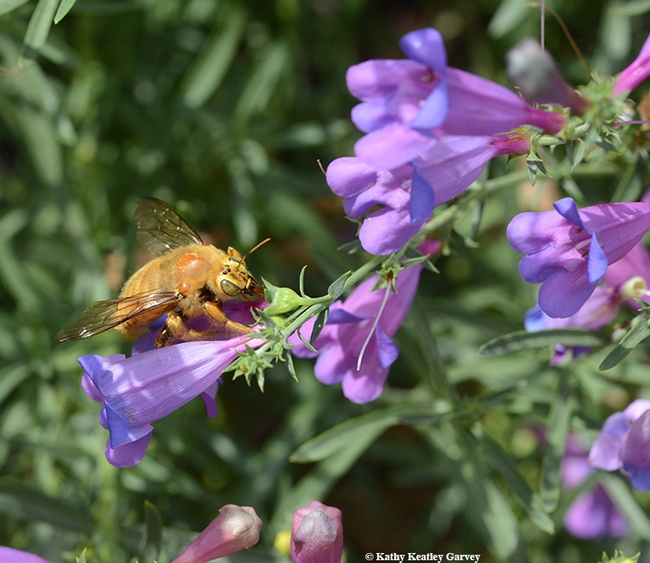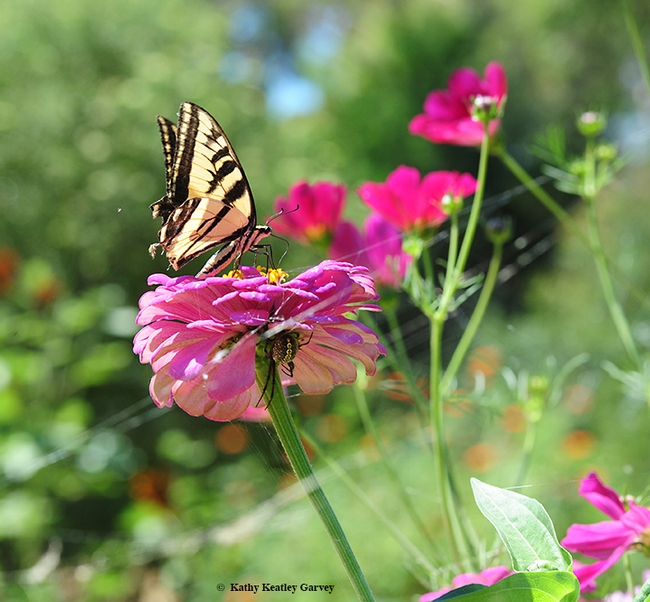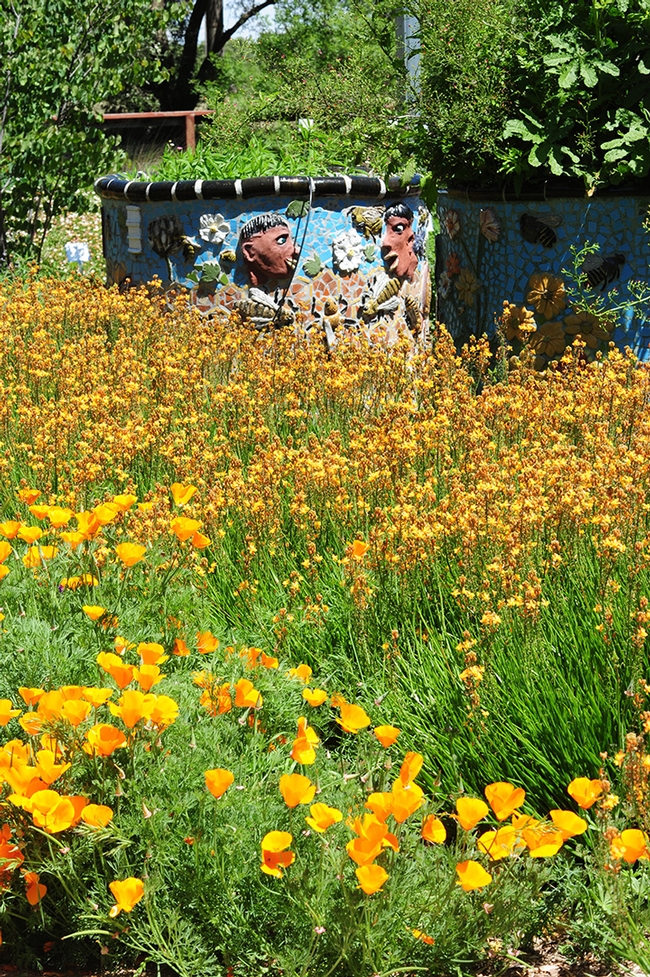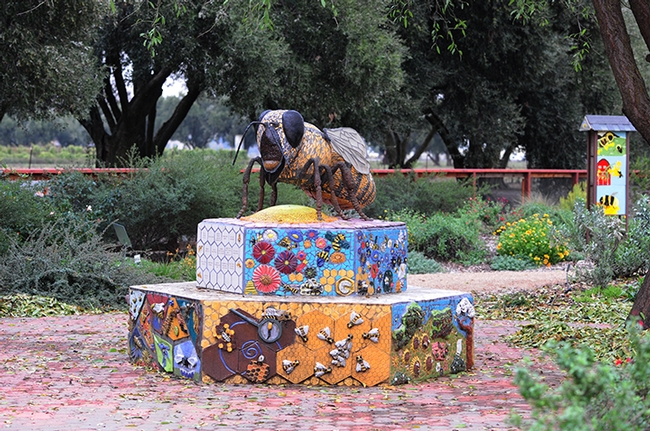- Author: Kathy Keatley Garvey
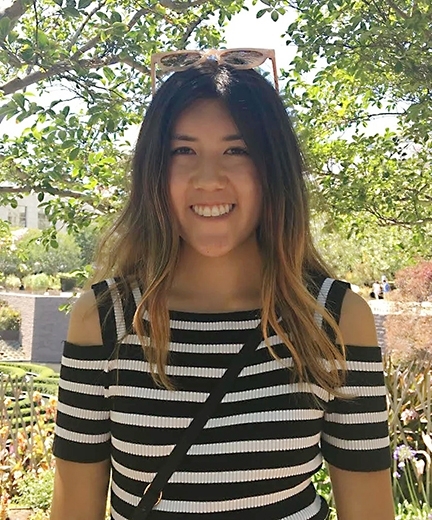
A recent example: RSPIB scholar Madeline Handy, an undergraduate student and research intern in the laboratory of community ecologist Rachel Vannette, originated the research about exploring gut bacteria in carpenter bees and the results are now published in the journal Molecular Ecology.
Gut bacteria of two carpenter bee species shows a surprising find: their gut bacteria is more similar to social bees like honey bees and bumble bees than to solitary bees, even to closely related bee species. Unlike honey bees, carpenter bees do not live in hives, they have no queen and they do not produce honey.
The work focused on two species of carpenter bees, the Valley carpenter bee or Xylocopa sonorina, and the mountain carpenter bee, Xylocopa tabaniformis, from multiple geographic sites in their range, said Vannette, corresponding author and an associate professor in the UC Davis Department of Entomology and Nematology.
The research suggests that “sociality may not be the main driver of microbiome structure in bees as is often assumed,” Vannette said.
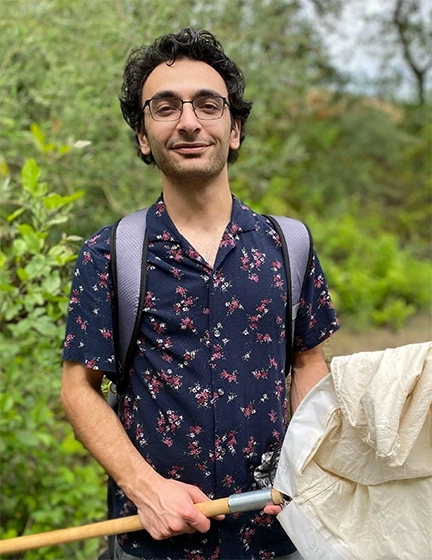
“Maddie sampled carpenter bees from Davis--with locations crowdsourced using NextDoor--and she traveled to Anza Borrego to sample bees from this preserve, under a grant supported by the University of California's Natural Reserve System,” Vannette related. “We also received samples from collaborators in Tucson so that we could compare if the microbiome of the two carpenter bee species differed across a broad range in the southwest United States.”
The researchers sequenced the microbial communities “using technology that produces longer reads from microbial DNA and allows us to get a better picture of the microbes that are found in the crop and gut, as well as their relatedness to each other,” Vannette said.
“We found that bacterial species in the gut are consistent and predictable among individual bees while bacteria in the crop are more variable and reflect what the bees have been eating.” Vannette said. “We also found that the main gut bacteria were found in bees throughout the range of the species. The surprising part was that carpenter bees are not eusocial yet their gut contains a microbiome of a social bee. We speculate that carpenter bee's long lives and limited social interactions, may help to maintain this consistent and 'social' microbiome.”
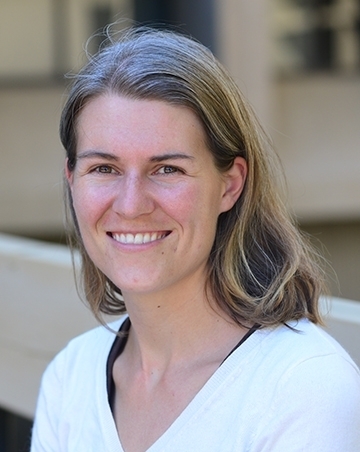
Next Steps. The next steps? “We would love to know what are these bacteria doing and if they are beneficial to bees. Our lab is excited to explore how bacterial and fungal communities in bee GI tract, stored food and other insect life stages like larvae or pupae may contribute to bee nutrition and health.”
The six-member team also included co-authors Michael Yu, UCLA Department of Ecology and Evolutionary Biology; Nicholas Saleh, Department of Entomology and Nematology Fort Lauderdale Research and Education Center, University of Florida, Davie; and Madeleine M. Ostwald, School of Life Sciences, Arizona State University, Tempe.
Their paper is titled “Incipiently Social Carpenter Bees (Xylocopa) Host Distinctive Gut Bacterial Communities and Display Geographical Structure as Revealed by Full-Length PacBio 16S rRNA Sequencing.”
Abstract:
“The gut microbiota of bees affects nutrition, immunity and host fitness, yet the roles of diet, sociality and geographical variation in determining microbiome structure, including variant-level diversity and relatedness, remain poorly understood. Here, we use full-length 16S rRNA amplicon sequencing to compare the crop and gut microbiomes of two incipiently social carpenter bee species, Xylocopa sonorina and Xylocopa tabaniformis, from multiple geographical sites within each species' range. We found that Xylocopa species share a set of core taxa consisting of Bombilactobacillus, Bombiscardovia and Lactobacillus, found in >95% of all individual bees sampled, and Gilliamella and Apibacter were also detected in the gut of both species with high frequency. The crop bacterial community of X. sonorina comprised nearly entirely Apilactobacillus with occasionally abundant nectar bacteria. Despite sharing core taxa, Xylocopa species' microbiomes were distinguished by multiple bacterial lineages, including species-specific variants of core taxa. The use of long-read amplicons revealed otherwise cryptic species and population-level differentiation in core microbiome members, which was masked when a shorter fragment of the 16S rRNA (V4) was considered. Of the core taxa, Bombilactobacillus and Bombiscardovia exhibited differentiation in amplicon sequence variants among bee populations, but this was lacking in Lactobacillus, suggesting that some bacterial genera in the gut may be structured by different processes. We conclude that these Xylocopa species host a distinctive microbiome, similar to that of previously characterized social corbiculate apids, which suggests that further investigation to understand the evolution of the bee microbiome and its drivers is warranted.”
Handy, who is pursuing her master's degree in public health, says her interest is “in all things microbiome, but I'm particularly interested in women's health and nutrition when it comes to the microbes living in our bodies.”
Sbardellati is interested in understanding how microbial ecology shapes macroscale ecology. In the Vannette lab, he studies bacteriophage (viruses which target bacteria) communities associated with the bumble bee gut and how phages shape gut microbial communities.
The Vannette lab is a team of entomologists, microbiologists, chemical ecologists, and community ecologists trying to understand how microbial communities affect plants and insects, and sometimes other organisms as well.
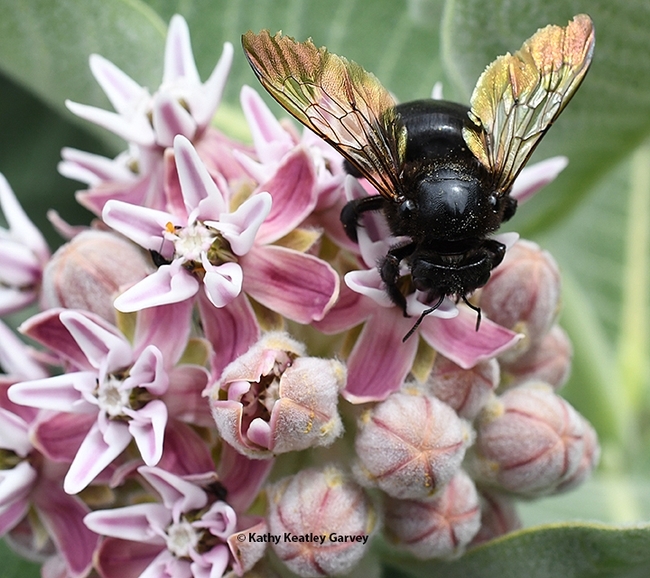
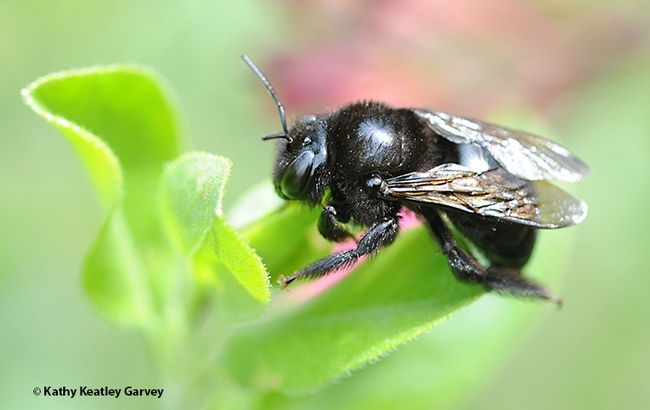
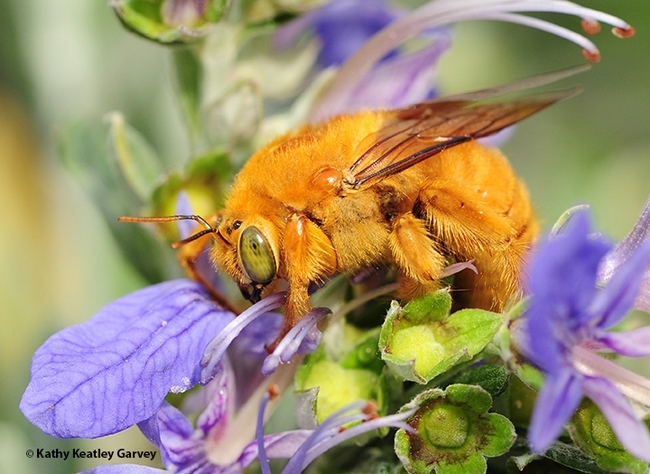
- Author: Kathy Keatley Garvey
Bugs and bees. Bees and bugs.
That's what's on the menu--or that's what's buzzing--over the next few weeks in the Davis/Berkeley area.
Bugs.
Saturday, Sept. 21
Open House, Bohart Museum of Entomology Open House, UC Davis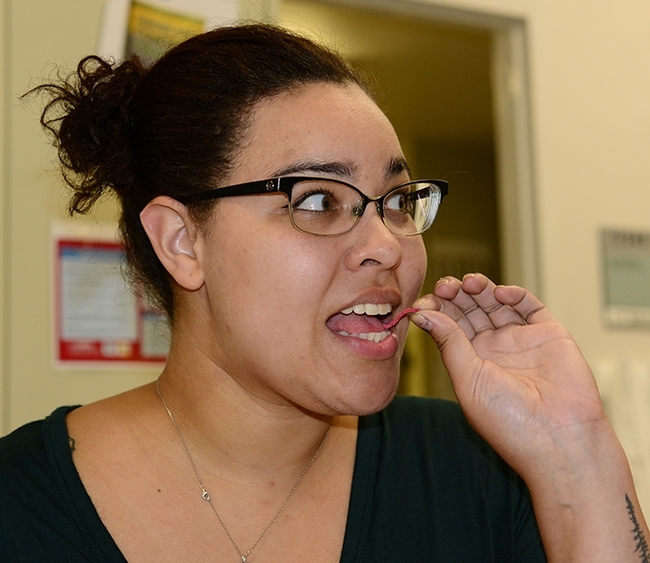
Or, you can view the global collection of insect specimens, cuddle a critter at the live "petting zoo" (think Madagascar hissing cockroaches, walking sticks and tarantulas) or buy a t-shirt, poster, jewelry, book, insect-collecting equipment and more in the gift shop.
The Bohart Museum, directed by Lynn Kimsey, professor of entomology at UC Davis, houses some eight million insect specimens, collected from all over the world.
Bees.
Wednesday, Sept. 25
Bee Seminar at UC Davis Department of Entomology and Nematology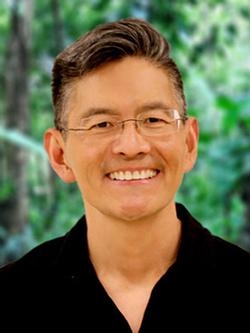
This is the first seminar in the series of fall quarter seminars sponsored by the UC Davis Department of Entomology and Nematology and coordinated by Rachel Vannette, assistant professor.
"In addition to the classical arm race that has evolved between predators and prey, information races also occur, which can lead to the evolution of sophisticated animal communication," Nieh says in his abstract. "Such information can shape the food web and contribute to the evolution of remarkable communication strategies, including eavesdropping, referential signaling and communication within and between species, including between predators and prey." Assistant professor Brian Johnson is the host.
Bees.
Saturday, Sept. 28
Open House, Häagen-Dazs Honey Bee Haven, UC Davis
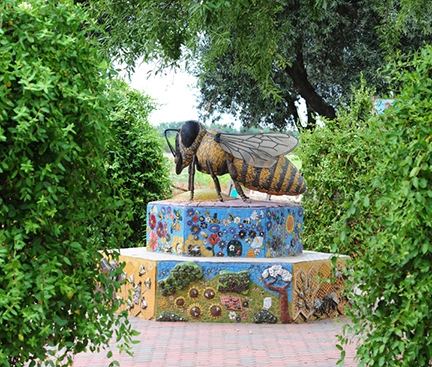
It will include sales of plants and native bee condos, honey tasting, catch-and-release bee observation and identification, and beekeeping and research displays. Several mini lectures are planned. Extension apiculturist Elina Lastro Niño serves as the faculty director of the bee garden, and Christine Casey as the manager. Casey announced today:
- See our analemmatic sundial, the only one of its kind in the Sacramento area. Speak with dial master and beekeeper Rick Williams, M.D., to learn about how the dial was created and the links between human and bee perception of the sun.
- Representatives from the California Master Beekeepers' Association will provide an introduction to beekeeping and do openings of the Haven's bee hive.
- Learn about our research on bee use of ornamental landscape plants
- Buy bee-supporting plants and solitary bee houses for your own garden
- Sample local honey from Sola Bee Honey
- Donate a book on insects, gardening, or nature for our Little Free Library
The garden was installed in the fall of 2019 under the direction of then interim department chair Lynn Kimsey, director of the Bohart Museum of Entomology and professor of entomology at UC Davis. A ceramic-mosaic sculpture of a six-foot long worker bee, the work of Donna Billick of Davis, anchors the garden. Its title: "Miss Bee Haven." The garden is open from dawn to dusk.
Bees.
Sunday, Oct. 13
Second Annual Bay Area Bee Fair, Berkeley Flea Market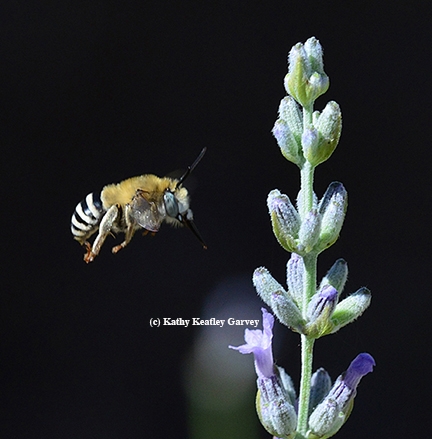
There will be kids' art activities, pollinator-themed art, and "education and inspiration for supporting bee and other pollinator populations." It's a place to learn about planting pollinator-friendly gardens and creating shelter/habitats.
One of the guest speakers will be bee scientist/professor Gordon Frankie of UC Berkeley, who co-authored the popular California Bees and Blooms: A Guide for Gardeners and Naturalists with Robbin Thorp, Rollin Coville and Barbara Ertter.
To get involved, reserve a booth, volunteer, or learn more, contact pollinatorpartiers@gmail.com. Or check out the website and Facebook page.
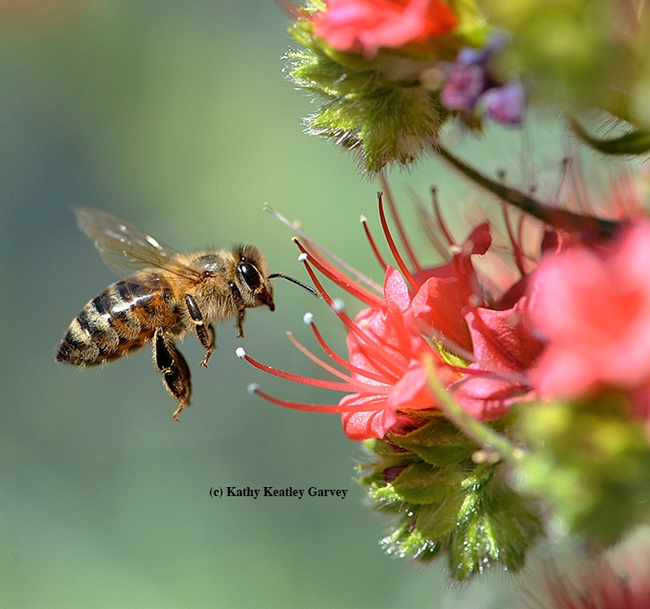
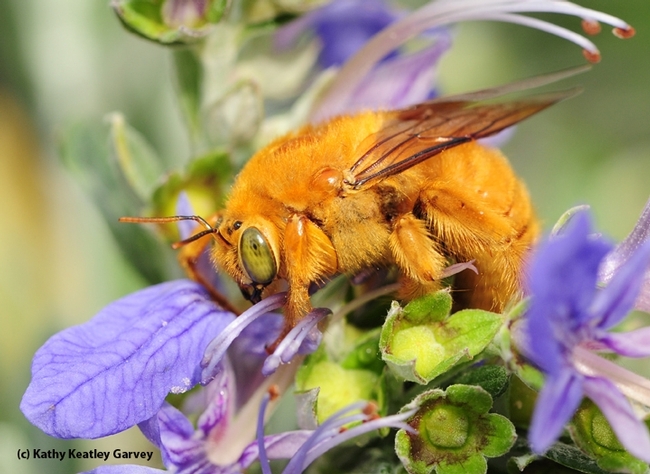
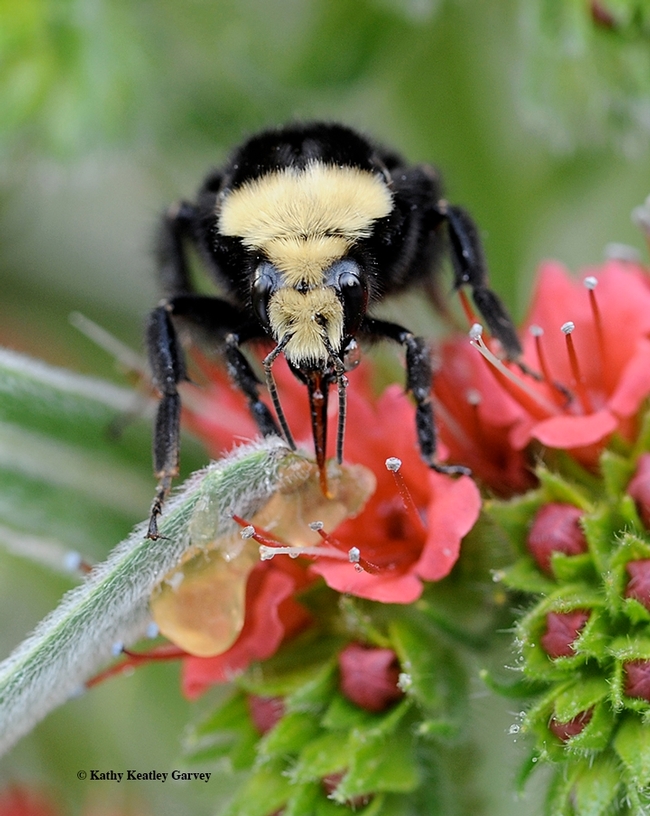
- Author: Kathy Keatley Garvey
Salivating over salvia?
You can see, salivate--and purchase--salvias and more at the spring premiere plant sale sponsored by the UC Davis Arboretum and Public Garden on Saturday, April 6.
They'll offer everything from "Bee's Bliss" to "Black Lace" to "Blaze" to "Brilliance." Among the many others: "Whirly Blue, "Pozo Blue," "Marine Blue," "Little Kiss," "Midnight," "Pink Cadillac" and "Hot Lips."
The plant sale, open to the public, is set from 9 a.m. to 1 p.m. at the one-acre Arboretum Teaching Nursery on Garrod Drive. It's a great place to buy plants to attract our pollinators: bees, butterflies, birds, beetles and bats. Not to mention syrphid flies, aka hover flies/flower flies!
You can download the plant sale inventory on the website. Favorites include the Arboretum All-Stars and California native plants, as well as herbs, perennials, shade plants, bushes, trees, vines and more.
Can't make it on Saturday, April 6? Plant sales are also scheduled Saturday, April 27 and Saturday, May 11.
Happy spring! Happy salivating! And happy/hungry pollinators!
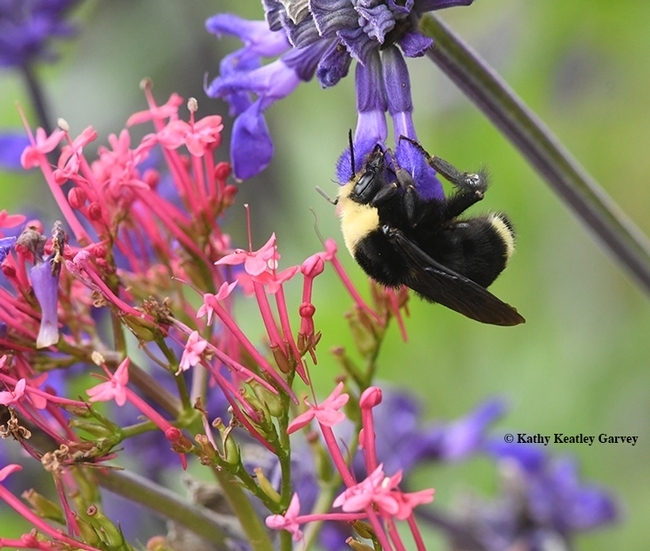
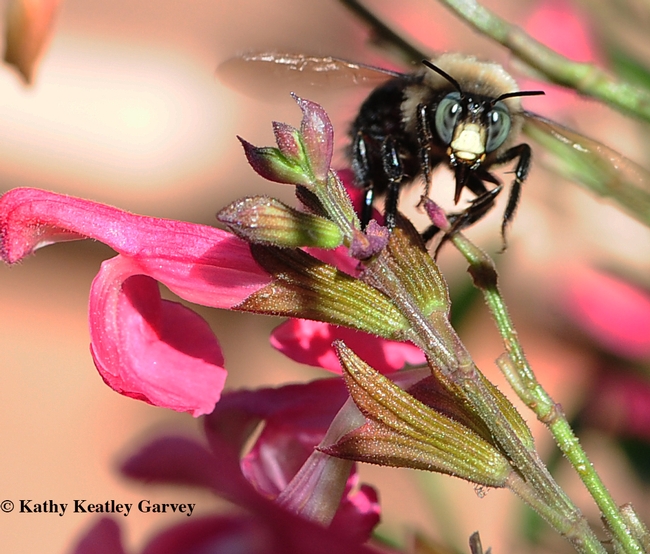
- Author: Kathy Keatley Garvey
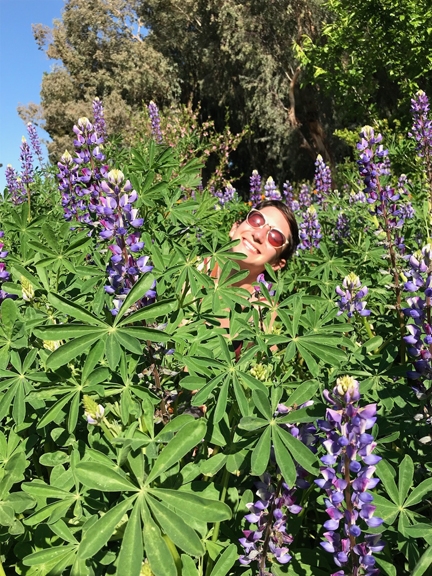
Not so with the Biological Orchard and Gardens (BOG) on the University of California, Davis, campus. It's a 24,000-square foot treasure, a living museum planted not only with several dozen species of heritage fruit trees, but landscaped with colorful mini-gardens.
This spring scores of wildflowers bloomed in awe-stopping glory, prompting passersby to pull out their cell phones and take selfies.
“The project began in 2010 when a group of students raised the money to convert an under-utilized lawn into a working orchard with fruits free for everyone to enjoy,” related former student project manager and now BOG volunteer Emily Dorrance. She recently graduated with a bachelor of science degree in environmental policy analysis and planning.
“Since then, the team has grown to involve many other UC Davis faculty, staff, and student groups," Dorrance said. ”Ernesto Sandoval, manager and curator of the UC Davis Botanical Conservatory, has been an advisor to the BOG student leadership for many years now and continues to be an important partner!”
At its core, BOG is a collaboration of students, staff and academic programs and an outdoor ecological laboratory that directly supports the university's popular Introduction to Biology course. Or, as the BOG Facebook page indicates: "An agro-biodiverse collaboration between students, staff, academic specialists and programs at UC Davis!"
BOG is located in front (or back) of the Mann Laboratory on Kleiber Hall Drive, depending on which way you're going! If you park in Lot 26, off Kleiber Hall Drive, it's a short walk down the sidewalk to BOG.
"The orchard you see today was planted two years ago," Dorrance noted. "The wildflowers were seeded four years ago and continue to self-seed, with some supplementation.We're planning on planting some more permanent plantings in the fall. The Mediterranean plots surrounding the orchard will have some more seasonal variety as well! I don't think we have any major planting plans for this summer but that could change!"
Among the flowers blooming in the Bog in the early spring, by color:
- Red: European red flax, Linum grandiflorum rubrum, an annual that's native to Algeria
- Yellow: tidy tips, Layia platyglossa, an annual that's native to California
--The seep monkey flower, Mimulus guttatus, native to California
--Lupine, Lupinus, native to North America. - Blue: Desert bell, Phacelia campanularia, an annual herb that is native to California and endemic (limited) to California.
- Lavender: Phacelia, also called Lacy phacelia, blue tansy or purple tansy (Phacelia tanacetifolia), native to the southwestern United States
--Lupine: Lupinus, native to North America - Red-Orange-Yellow: Blanket flower or Gaillardia (Gaillardia × grandiflora), native to North and South America
- Orange: California golden poppies, Eschscholtzia californica
The orchard contains heritage fruit tree varieties threatened with commercial extinction. They include the Gravenstein and Johnathan apples; the Suncrest peach; the Bleinheim apricot, the Mariposa plum and the Meyer lemon. See the full list of trees as well as some fun facts here: https://thebogatucd.wixsite.com/bogucd/single-post/2017/07/18/BOG-Fruit-Trees.
In 2013 BOG received a "Go Green" grant from the UC Davis Dining Services. Then last month, the Green Initiative Fund (TGIF) awarded $19,934 to the BOG for final site development. It was a major effort. (On its Facebook page, BOG thanks Kelly Richmond and Andra George for help on the grant and supporters Geoffrey Benn, Ivana Li, Pat Randolph, Lee Anne Richmond, and Peter Hartsough.)
Future plans? According to the website: "The BOG is joining the campuswide effort in transitioning towards a landscaping genre that embraces lawn reduction and plantings more suitable for the teaching, outreach and research mission of the university and sustainability practices. The motivation for the BOG is to serve as a teaching garden for multiple university courses and provide a relaxing space to enjoy the outdoors and simply delicious fruit. The BOG's main function is to serve a demonstration of and test site for plants more suitable to the region's hot dry summers and cool wet winters, with a focus on drought tolerant plants less commonly available in the Sacramento Valley."
When we stopped by the BOG in mid-April, the Phacelia tanacetifolia proved to be a favorite: honey bees (Apis mellifera), male and female Valley carpenter bees (Xylocopa varipuncta) and yellow-faced bumble bee (Bombus vosnesenskii) were all over it. It's fairly uncommon to see male Valley carpenter bees--"teddy bear bees" or green-eyed blonds--foraging, but there they were, along with the female of the species. "The girls" are solid black in a clear-cut case of sexual diphormism.
Want to get involved? The BOG seeks volunteers, interns and donors. See its website at https://thebogatucd.wixsite.com/bogucd or its Facebook page at www.facebook.com/ucdBOG or email "thebogatucd@gmail.com."
You can even adopt a tree!
Or become buddies with a bee!
(Note: Most of the annual wildflowers have "passed" since our visit in mid-April, but the orchard is thriving with newly formed fruit.)
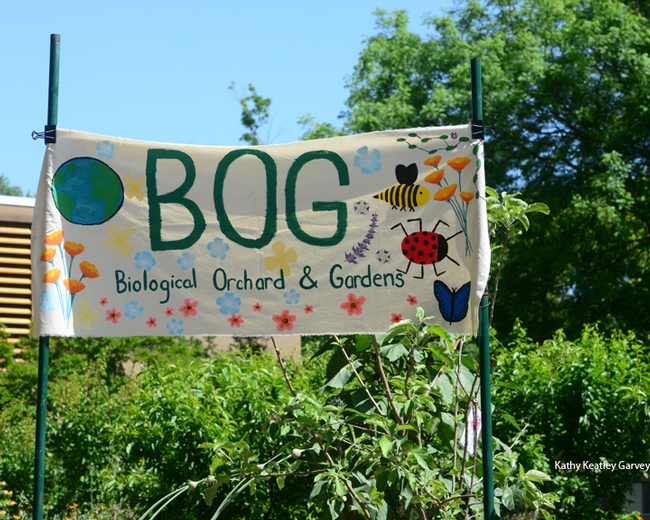
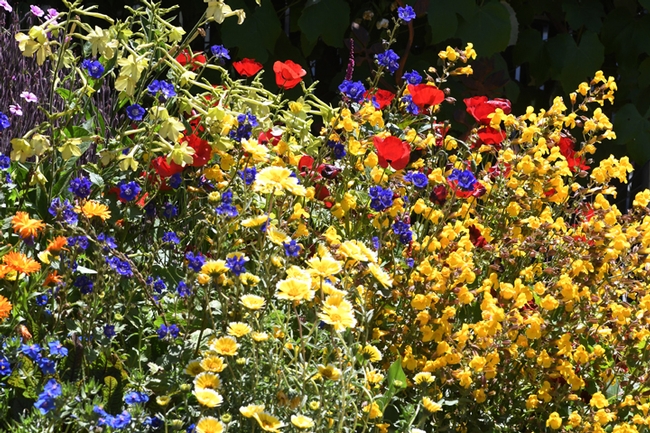
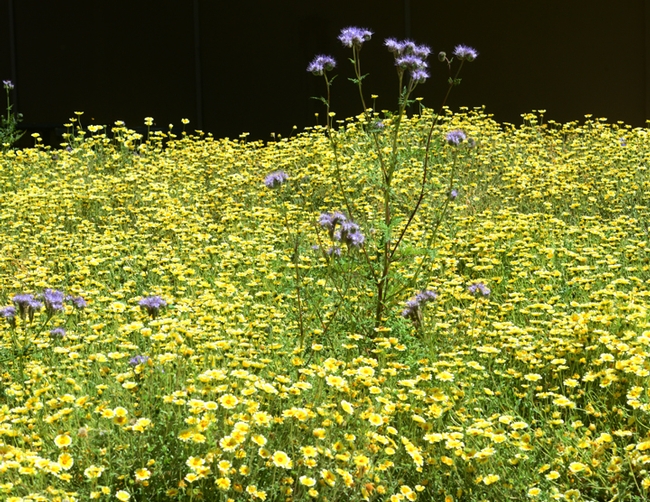
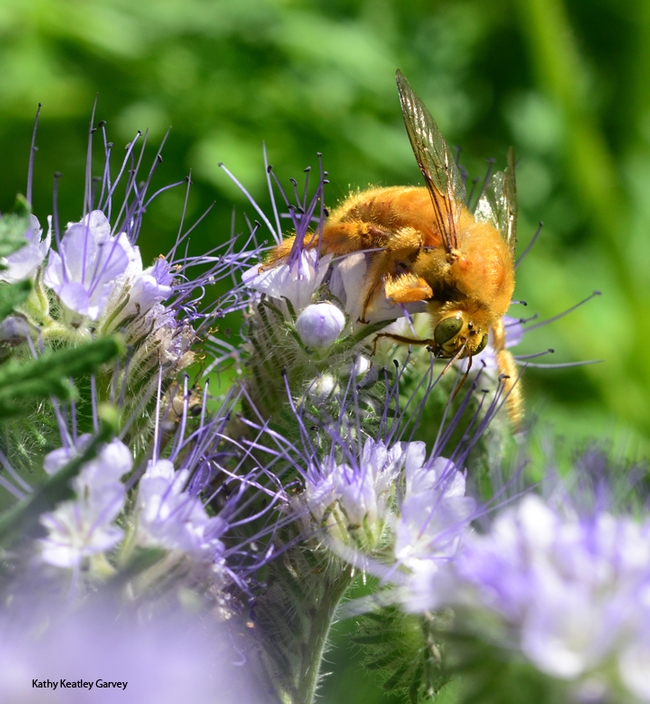
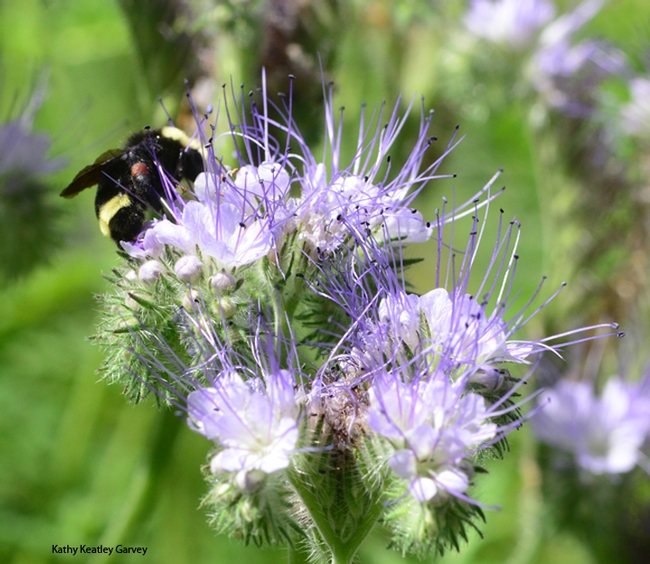
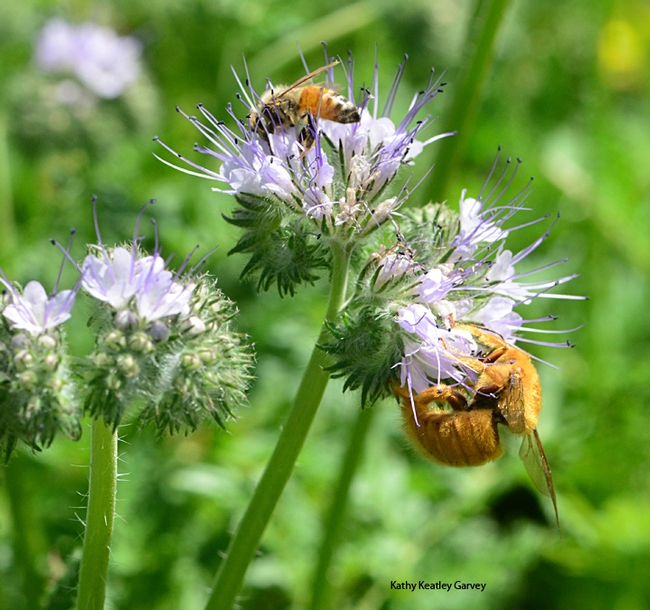
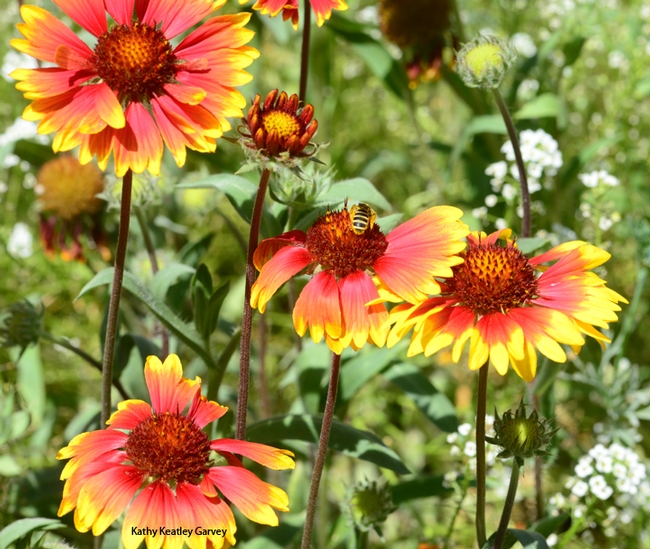
- Author: Kathy Keatley Garvey
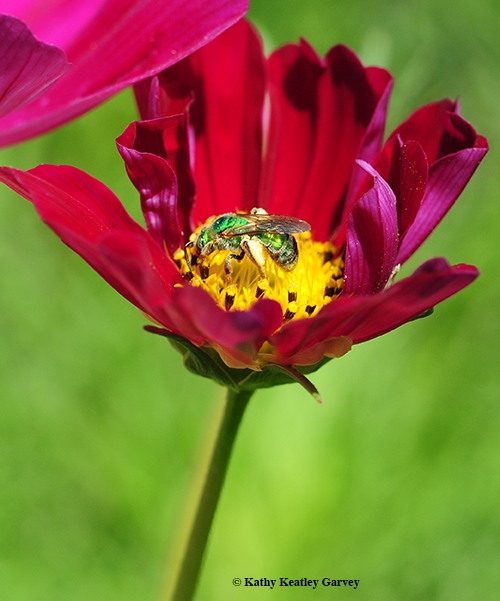
Yes?
It's always held the Friday before Mother's Day to promote awareness of North America's public gardens. The non-profit American Public Gardens Association of Pennsylvania established the observance in 2009.
Want to celebrate it at the University of California, Davis?
The Haagen-Dazs Honey Bee Haven, part of the UC Davis Department of Entomology and Nematology and located on Bee Biology Road, next to the Harry H. Laidlaw Jr. Honey Bee Research Facility, Davis campus, has scheduled an open house on Saturday, May 12 from 11 a.m. to 2 p.m.
Here's what's planned, according to bee garden manager Christine Casey:
- Bee observation and ID demonstrations for kids of all ages
- Bee and plant experts to answer your questions
- Learn what and how to plant to help bees
- Learn about home food gardens and bees
- Free sunflower plants while they last
- Free parking at the garden
- Difficult-to-find bee plants for sale. (See plant inventory.)
A little history:
The garden, installed in the fall of 2009, was founded and "came to life" during the term of interim department chair, Professor Lynn Kimsey, director of the Bohart Museum of Entomology, who coordinated the entire project.
A Sausalito team--landscape architects Donald Sibbett and Ann F. Baker, interpretative planner Jessica Brainard and exhibit designer Chika Kurotaki--won the design competition.
The half-acre bee garden is anchored by Miss Bee Haven, a six-foot long mosaic ceramic bee sculpture that is the work of self-described "rock artist" Donna Billick of Davis. She and entomologist/artist Diane Ullman co-founded and co-directed the UC Davis Art/Science Fusion Program. The art in the garden is the work of their students, ranging from those in Entomology 1 class to community residents. Eagle Scout Derek Tully planned, organized and built a state-of-the-art fence around the garden.
The garden is named for the primary donor, the premium ice cream brand, Haagen-Dazs. Other major donors include the California State Society of the Daughters of the American Revolution (under the leadership of then State Regent Debra Jamison of Fresno). Names of many of the donors--those who gave $1000 or more--are inscribed beneath the Miss Bee Haven sculpture.
Missy Borel Gable, now director of the statewide UC California Master Gardeners' Program, served as the founding manager of the garden. Under her leadership and the work of the 19 founding volunteers, the bee garden was listed as one of the Sacramento Bee's top 10 garden destinations. The 19 volunteers chalked up 5,229 hours of service between May 2010 and Feb. 15, 2013, when their assignment ended. At the $10 minimum wage, that would have amounted to $52,290.
Native bee specialist Robbin Thorp, distinguished emeritus professor of entomology at UC Davis, who has monitored the garden since its very beginnings, has identified more than 80 bee species there.
If you visit the garden on Saturday, odds are you'll see many different species, including honey bees, bumble bees, carpenter bees, and sweat bees, as well as butterflies and dragonflies.
